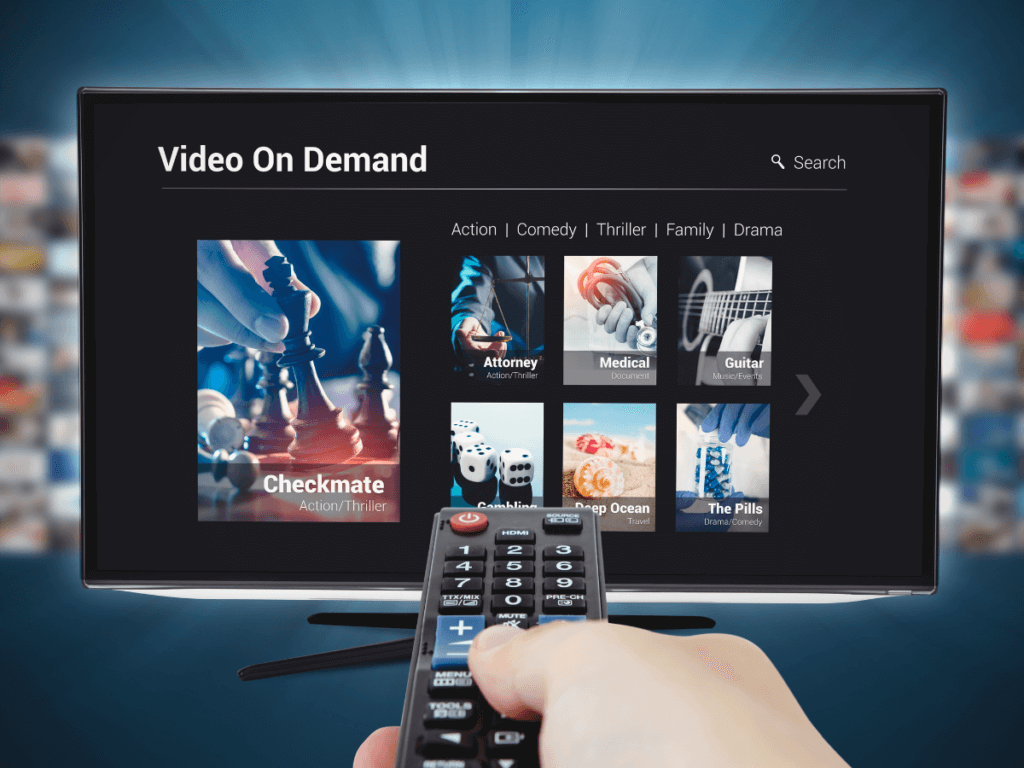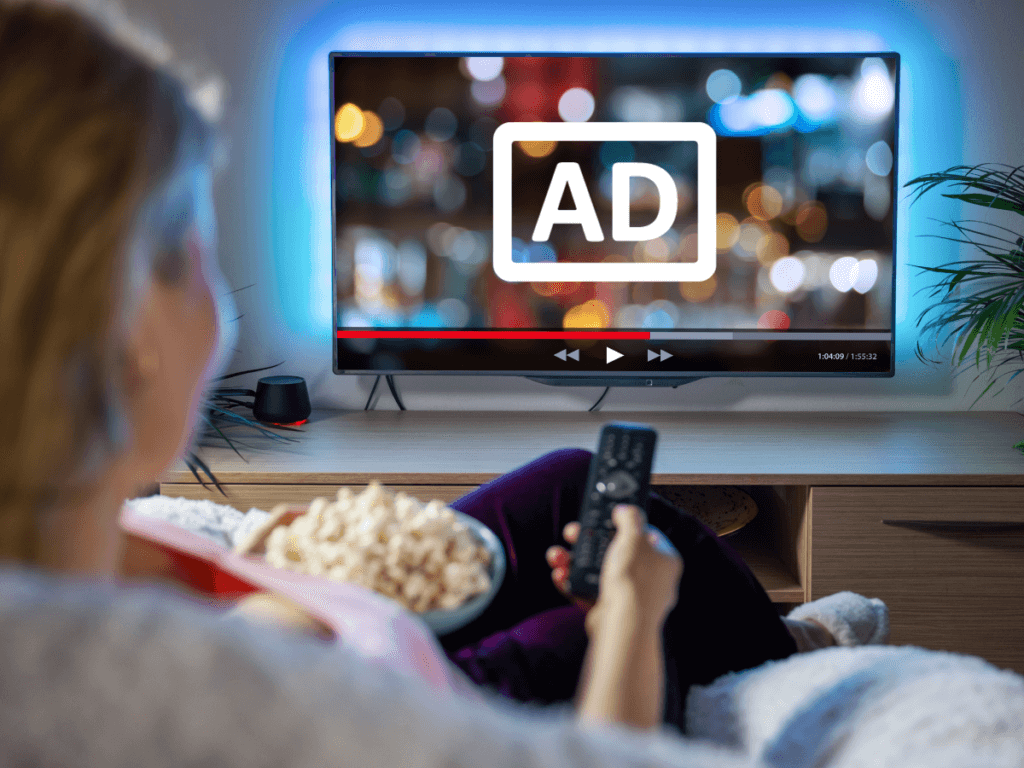One constant of modern life is that people always consume media. We always seek out entertainment and information. Content consumption is at an all-time high, so competition for viewer’s attention is as well. However, 84% of marketers say that it is getting harder to grab a consumer’s attention with television advertising alone. Most advertisers surveyed say that TV ads aren’t the first thing that they plan anymore, instead starting with digital and then working TV in later. How can CTV and OTT change that?
CTV and OTT
Many marketers are using CTV (connected TV) or OTT (over-the-top) channels to target consumers using streaming services and connected TV devices such as Hulu and Roku. Advertisers are embracing these platforms as more and more ad space becomes available. Spending for CTV advertising grew from $6.94 billion in 2019 to $8.88 billion in 2020, a 28% increase.

What’s the difference between CTV and OTT? Connected TV are things like Apple TV and Amazon Firestick. It is marketing based on the devices used to connect users to TV without cable. Over-the-top is advertising space found on streaming services, like Hulu and Peacock. (Personally, it helps me to think of them like CTV is hardware and OTT is software.)
Right now in the United States more people are reachable through CTV and OTT than with cable. Hulu alone made $3 billion in ad revenue last year! Why not get a piece of the CTV and OTT pie?
The Disadvantages to Consider

What are some disadvantages? There is one main thing: CTV and OTT have lower engagement rates than digital advertisers expect. Why? Well, theres no way to click or show engagement through a TV. For the consumer to follow a call to action, they’re probably going to use a different device. Cross-device traffic is harder to push and harder to track.
With old school TV advertising, an ad’s effectiveness was tracked by seeing if sales went up in the area where the ad played. Today, that’s just not enough data, especially if CTV/OTT is just one piece of an omnichannel campaign. It’s important to be able to track every part of that campaign, including your TV ads. But how can you do that?
Tracking Options
Option 1: You can keep track of buyers using IPs. Most people make big purchases on their home wifi. Using retargeting and IP-based cookies, it’s pretty simple to serve ads across devices.
Option 2: Use specific, trackable call-to-actions. The QR-code Burger King ad is a fantastic example of this. In a CTV ad, Burger King challenged consumers to “catch” a moving QR code. If you caught the QR code, it took you to download their app and earn a free Whopper. It was fun, engaging, AND trackable.
In general, unique QR codes are a great way to track the conversions you get from a specific TV ad. If you use services such as Hulu or Disney+, you’ve probably seen some of these ads with QR codes off to the side.
In the Future
Since CTV/OTT is a relatively new ad format, theres a lot new and exciting ways it can be used in the future!

- New ad formats
We will probably see more direct response ads like the Burger King one. Another TV ad trend is “pause ads.” These ads show up when a user pauses the program. Some companies are starting to leverage this by thinking about why someone would need to pause the show. Are they hungry? Then how about an Uber Eats ads. Or do they need a bathroom break? Maybe a Charmin ad would work well. - Programmatic Linear TV is also starting to become more of an option. Although quite new, it’s becoming more possible to use Nielsen-based user-level data (age, demographic, income) or media-level targeting (show, part of day, network) to inform programmatic-style ad-spend for traditional linear TV. 20% of advertisers surveyed said that they planned to incorporate programmatic linear into their marketing plans this year, and another 20% said that they plan to in the near future.
How will TV advertising change in the future? It’s possible that as CTV and OTT take over the traditional TV space, household-level targeting such as IP-tracking and Neilsen-style demographics will become the primary choice for marketers looking to incorporate TV into their omnichannel campaigns.
Using new tools and integrating traditional ones, marketers will be able to effectively use TV in their campaigns well into the future!






